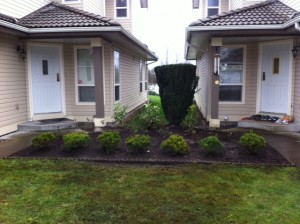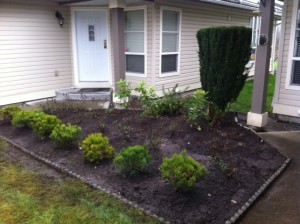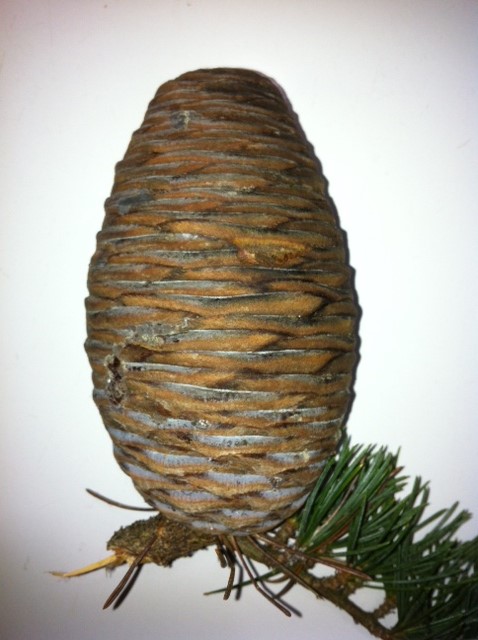Editing existing landscapes can be lots of fun. Landscape maintenance can become routine so it’s always fun to install new plants in spring and fall when temperatures are favorable for proper plant establishment.
Landscapes are not meant to be static; plants grow and mature, home owners change, some plants die or wear out their welcome. Sometimes extreme weather events force changes. In the example below the Rhodos wore out their welcome, the strata president did not care for Hydrangeas and there was a push for site look consistency: low evergreens with Azaleas in behind them.
The bed below required major editing.
Task list:
- remove large Rhodos and Hydrangeas
- reposition large Taxus to the back of the bed
- move two ferns (Polystichum munitum) to the back
- divide Hostas and replant closer to both entrances
- install new plants as specified by strata
New plant species
Front line: Pinus mugo ‘Mughus’
Middle: Azalea japonica ‘Girard’s crimson’
Back line: Rhodo ‘Anna Rose Whitney’
One final step not shown here is bed top-dressing with quality weed-free soil for an instant sharp, dark look. The new plants also appreciate the new soil addition. This should be a standard last step for all plant installations.
Notes for beginner plant installers:
- Always use the existing soil to backfill your planting holes. Using new soil sounds attractive but water will migrate into your planting holes and your plants will become joysticks. Avoid this headache by backfilling with existing soil.
- Don’t be afraid to rough up the plant roots so they can stop circling and grow out.
- Gently water your new plants in.
Your home or business should be an inspiring place to live or work in. Edit your landscape as required. Get professional help if you have to. Look for Landscape Industry Certified landscapers who are committed to their trade.











